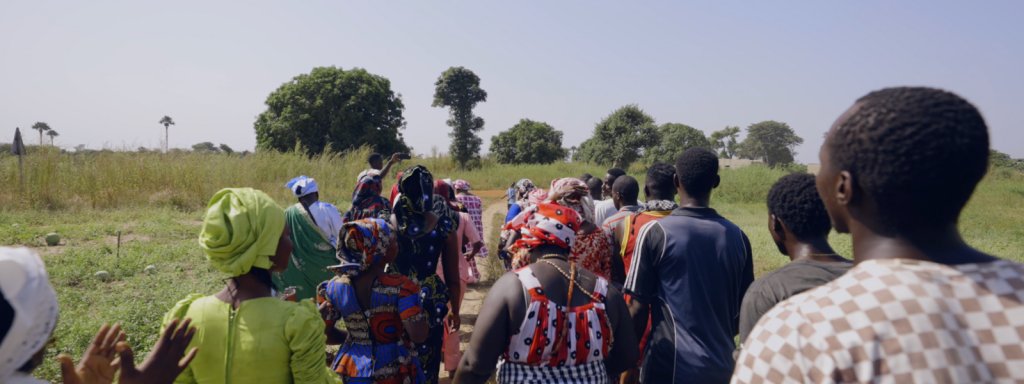Taking Back What is Theirs: Women and Girls’ Access to Education in Afghanistan
Years after the US-led military intervention defeated the Taliban, around 2/3rds of Afghan girls still were out of school (Human Rights Watch, 2017a). Since regaining power in August 2022, the Taliban has banned girls from secondary and tertiary education again (Hadid, 2022). These events have intensified an already dire situation, leaving the future of Afghanistan’s women uncertain and jeopardizing the country’s developmental progress.
Prior to this, an Afghan government report (from 2015) indicated that the number of children attending school exceeded 8 million. However, Human Rights Watch disputed the accuracy of these figures in a report released a few years after (2017a). This is common among post-conflict governments due to displacement and unaccounted populations. This potential inaccuracy is noteworthy because it represents a negative trend in Afghan education as a positive one.

In addition to UN pressure, the Afghan government has legal obligations to supply education to its population. In the Convention on the Elimination of All forms of Discrimination Against Women (CEDAW), Afghanistan ratified that it would ensure women equal rights, including in education (Human Rights Watch, 2017b). This obligation highlights the need for Afghanistan to prioritize and uphold its commitment to equal education. The failure to do so directly violates Afghan women’s rights and impedes the country’s progress toward development.
The Taliban: Brief History
The Taliban was formed in the 1990s by Islamic guerrilla fighters who promised stability after years of conflict (Maizland, 2021). Their beliefs stem from the harsh interpretations of the Pashtuns’ pre-Islamic tribal codes, which require women to be covered entirely, have a male chaperone, and be denied education. In 2001, a U.S.-led invasion ousted this government, and Afghanistan began to see improvement. But by 2021, US troops began withdrawing from Afghanistan, and the Taliban were able to regain control of the country – immediately reinstating these codes.
Education under the Taliban
Afghanistan was already struggling to close gaps in education between boys and girls after the Taliban in 2001. When leaders removed women and girls from schools, this set the country even further back. Additionally, to deter women and girls from attending schools, the Taliban began targeted attacks, such as acid assaults, sexual harassment, and kidnappings (Human Rights Watch, 2017b).

Simultaneously, existing problems inside and outside Afghan schools were intensified.
Inside schools (Human Rights Watch, 2017a):
- Lack of female teachers
- Overcrowding
- Gender segregation
- Poor infrastructure (60% of schools do not have toilets/drinking water)
Outside school (Human Rights Watch, 2017a):
- Gender-based violence
- Partner violence
- Higher costs of attendance
- Increased rate of child marriage
What does this mean for development?
Excluding half a population from education significantly reduces a country’s development. Already in Afghanistan, this has resulted in:
- Losses of up to 5% of Afghanistan’s GDP due to restricted opportunities for women (UNDP, Maizland, 2021).
- Increases in women arrested for “violating” discriminatory policies (Amnesty International, Maizland, 2021).
- Higher rates of child marriage (Maizland, 2021).
- 3.5 million children out of school – 85% being girls (Human Rights Watch, 2017b).
These statistics, plus increasing child/maternal mortality rates, will deprive communities of significant contributions and lead to societal unrest. How does Afghanistan expect to move forward when all of these factors work together to keep women and girls from education?
What is being done?
Women for Women International (WFWI) is combating this endemic. Through this organization, women can join others like them and learn to improve their health, understand their rights, and continue their education (Women for Women International, 2023). WFWI is creating an environment of learning that aims to enhance women’s well-being. Although WFWI is focused on reaching sustainable development goal 5, they recognize that women play a crucial role in realizing all SDGs.
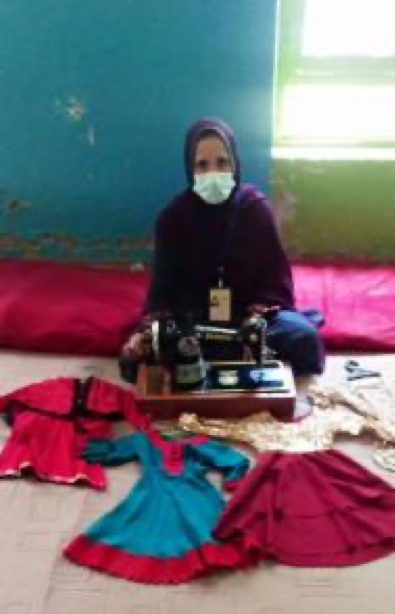
WFWI’s Stronger Women, Stronger Nations program has reached over 125,000 women in Afghanistan. This program has significantly impacted populations of women. One woman, Nasima, attests that since she joined this program, she learned basic math, how to save money, and began sewing dresses. She uses her extra money to buy food and items for her family (Women for Women International, n.d.). Similarly, women who graduate from the program report understanding their rights better and having taken action to share the effects of violence against women in their communities (Women for Women International, 2023).
WFWI was forced to pause aid due to the Taliban’s control. However, since December they have been able to reopen their community centers/schools at reduced levels. Working alongside local communities and UN agencies, WFWI continues to advocate to end this education ban (Women for Women International, 2023).
Education empowers women and girls to understand their rights and take action against violence while enhancing development. International organizations, like WFWI, must continue to work with Afghanistan to ensure women’s rights are protected and access to education for all is facilitated.
Donate: Women for Women International
References
Amiri, W. (2023, March 7). Women, Protest and Power- Confronting the Taliban. Retrieved from Amnesty International website: https://www.amnesty.org/en/latest/campaigns/2023/03/women-protest-and-power-confronting-the-taliban/
Hadid, D. (2022, December 21). Taliban begins to enforce education ban, leaving Afghan women with tears and anger. NPR. Retrieved from https://www.npr.org/sections/goatsandsoda/2022/12/21/1144703393/taliban-begins-to-enforce-education-ban-leaving-afghan-women-with-tears-and-ange
Human Rights Watch. (2017a, October 17). “I Won’t Be a Doctor, and One Day You’ll Be Sick” | Girls’ Access to Education in Afghanistan. Retrieved from Human Rights Watch website: https://www.hrw.org/report/2017/10/17/i-wont-be-doctor-and-one-day-youll-be-sick/girls-access-education-afghanistan
Human Rights Watch. (2017b, October 19). Afghanistan: Girls Struggle for an Education. Retrieved from Human Rights Watch website: https://www.hrw.org/news/2017/10/17/afghanistan-girls-struggle-education
Maizland, L. (2021, September 15). The Taliban in Afghanistan. Retrieved from Council on Foreign Relations website: https://www.cfr.org/backgrounder/taliban-afghanistan
Women for Women International. (n.d.). My Name is Nasima: Life Changing Lessons. Www.womenforwomen.org. Retrieved from https://www.womenforwomen.org/stories/my-name-nasima
Women for Women International. (2023). What We Do. Retrieved from Womenforwomen.org website: https://www.womenforwomen.org/what-we-do
Yousafazai, S. (2023, March 8). On International Women’s Day, Afghan women blast the Taliban and say the world has “neglected us completely.” Retrieved from www.cbsnews.com website: https://www.cbsnews.com/news/international-womens-day-afghanistan-taliban-women-protest-say-world-neglected-us/
Para PREVENIR la violencia, dependemos de Miles de Manos: Creating Change Through Community Collaboration and Vocational Opportunity
By Julian Hernandez-Webster
Violence runs rampant throughout Latin America and the Caribbean (LAC), especially among young people, and despite efforts from national governments and international powers the problem remains persistent. In 2019, 43 of the world’s 50 most violent cities were located in LAC, where young men are most likely to become victims or perpetrators of violent crimes and young women commonly face threats of sexual violence and domestic abuse while femicide rates are among the highest in the world (Seguridad, Justicia, y Paz México 2020; Esmail 2019, para. 1; ECLAC 2022). Among the many national youth development and violence prevention policies or strategies that have been adopted in response, the Central American Integration System (SICA), in collaboration with the German Federal Ministry for Economic Cooperation and Development (BMZ), created the PREVENIR program to bring about change in El Salvador, Honduras, and Guatemala (The Northern Triangle). While PREVENIR included interventions for a range of factors related to citizen security, it placed an emphasis on educational reform through its “Miles de Manos” (Thousands of Hands) model and expansion of technical and vocational education training (TVET) as a catalyst for the reduction of youth violence and improvement in outcomes for students.
(Sanchez et al., p. 7)
Miles de Manos aims to “help children and young people effectively face the challenges of daily life” and prevent violence through schooling and extracurricular learning by strengthening the educational and communication skills of parents, teachers, and students, facilitating their cooperation, and supporting a culture of unity in each community (Miles de Manos 2023). The program was implemented in Central America’s Northern Triangle from 2009-2019, employing an “ecosystemic approach” which maintained that “significant others” such as teachers, parents, and peers play a key role in the development of young people and their behaviors. At the same time, the PREVENIR program sought to establish a knowledge management system in participating schools and develop institutional capacity to broaden vocational opportunities for young people at local and national levels (Esmail 2019, para. 5). Through Miles de Manos, SICA has trained educators, parents, and students using the organization’s facilitation guides, contributing to the establishment of frameworks for coexistence and behavioral expectations, enhanced communication practices, and the implementation of a democratic, participatory approach that grants students more autonomy in defining disciplinary strategies and encourages the development of problem solving and social skills (Miles de Manos 2023).
RESULTS
After seeing promising preliminary results from pilot programs in Guatemala and El Salvador, USAID funded an expansion of the Miles de Manos methodology into Honduras in 2014. Acting as an implementing partner, ChildFund Honduras selected 72 schools in high-risk urban settings – 36 pilot and 36 control – to test the functionality of Miles de Manos within local contexts (Sanchez et al. 2017, p. 5). The pilot program lasted 18 months, provided training to 265 teachers and benefitted 2,269 families (ibid. p. 6). Some of the most striking findings are included below:
- 20% increase in students that reported feeling safe and protected in their classroom and home – from 70%-90%
- In target schools, the monthly average incidence (reported by teachers) of…
- Emotional and psychological violence among students declined from 199 to 81
- Sexual violence among students declined by 50% – from 14 to 7
- Physical violence among students declined from 82 events to 31
- Disciplinary action declined from 306 to 138 events
- In-school vandalism dropped by 50% – from 14 to 7 events per month on average
- 34/36 pilot schools established peace and safety plans to respond to students’ needs
- Slight increase in students who report use of positive discipline from their parents, and students that know the expectations of their teachers regarding behavior and consequences
(Sanchez et al. 2017, p. 10-11)
The German Society for International Cooperation (GIZ), another implementing partner, reported the following:
“Visible physical violence between young people in these schools was reduced by 20 per cent over a period of six months. Communication between teachers and students improved, and learning and behavioural issues were increasingly solved in a spirit of partnership. Between 2014 and 2016, the education ministries in Guatemala, Honduras and El Salvador introduced Miles de Manos in another 600 schools and school networks. A total of 9,000 teachers took part in the training, and some 120,000 students are participating.”
(Esmail 2019, para. 10).
Additionally, the PREVENIR program developed a digital platform to promote youth employment at the end of 2015, providing young people with information about educational grants, entrepreneurship courses, job opportunities, manual training, and crucial life skills (Esmail 2019, para. 7). By the end of 2016, the program had constructed 25 computer centers, provided training to approximately 7100 youth, and created sustainable mechanisms that have enabled communities to continue the program independently (ibid.).
(Fumigalli 2018)
CONCLUSIONS
With its successful execution in several communities across three countries, the Miles de Manos model has caught the attention of massively influential international development institutions, such as USAID and NIH. As the combination of the Miles de Manos model and TVET has expanded to three Central American countries, with successes in each, the evidence suggests that the model can be replicated and has the potential for broader implementation. By providing the tools needed to establish collaborative peace plans and democratic disciplinary structures, Miles de Manos has made a positive impact on the wellbeing of students by significantly improving communication and mutual understanding of expectations, and ultimately reducing physical, psychological, and sexual violence in schools.
Despite its accomplishments, however, the program falls short in a few key areas. First, while the model was applied to schools in urban environments, rural children and youth make up a great deal of the population of students left out by current educational systems in the Northern Triangle. While providing quality education in rural areas presents a number of challenges, Miles de Manos should try to expand its outreach or alter the model to make education more relevant and accessible for these students. Additionally, while Miles de Manos embraces a framework that seeks to harness community engagement in order to cultivate cohesion and enhance the autonomy of students, similar in some ways to principles of the previously mentioned radical humanist paradigm, the methodology seems to address interpersonal relationships but largely overlooks individual reflection and development. A strategy that adds self-discovery initiatives to the model could deepen personal growth and also serve to make the Miles de Manos methodology more equitable, as parental involvement cannot be the same for every student. It is essential that all children and youth, in any community, feel that they have as much a place within it as those around them.
REFERENCES
Economic Commission for Latin America and the Caribbean. (2022, November 24). Femicide or feminicide. Gender Equality Observatory for Latin America and the Caribbean. Retrieved March 5, 2023, from https://oig.cepal.org/en/indicators/femicide-or-feminicide
Esmail, R. (2019). SICA: Preventing youth violence in Central America. Deutsche Gesellschaft für Internationale Zusammenarbeit. Retrieved March 5, 2023, from https://www.giz.de/en/worldwide/13494.html
Fumagalli, L. (2018, December 21). Training on teacher policies in Latin America. International Institute for Educational Planning. Retrieved March 17, 2023, from https://www.iiep.unesco.org/en/training-teacher-policies-latin-america-4790
Miles de Manos. (2023). Familias y escuela: ¡Juntas hacen la diferencia! Miles de Manos. Retrieved March 5, 2023, from https://milesdemanos.com/index.php/miles-de-manos/#1488898488093-49198718-5af3
Sanchez, R., Susman, K., Ramirez, D., Funez, K., Najera, D., Kocchiu, D., & Betancourt, P. (2017). (rep.). Executive Summary PUENTES PROJECT. USAID, ChildFund Honduras. Retrieved March 5, 2023, from https://www.childfund.org/uploadedFiles/NewCF/Impact/Knowledge_Center/ExecSummary-PuentesHonduras.pdf.
Seguridad, Justicia, y Paz. (2020, June 2). Boletín Ranking 2019 de las 50 ciudades más violentas del mundo. Seguridad, Justicia, y Paz. Retrieved March 5, 2023, from https://web.archive.org/web/20200804121557/http://www.seguridadjusticiaypaz.org.mx/sala-de-prensa/1590-boletin-ranking-2019-de-las-50-ciudades-mas-violentas-del-mundo
Putting Theory into Practice: Food and Education in Palestine
By Ellie Hoffman
Photo credits, from left to right: UNICEF State of Palestine, United Nations in Palestine, the Knowledge Hub on Sustainable Development Goal 4
Welcome back! In the previous post, I explored the intersection of food and education in the context of the United Nations’ Sustainable Development Goals. This post will build upon that theme by digging deeper into what food and education change efforts look like with the Nutrition Friendly Schools Initiative in Palestine.
Food and Education
Research has shown that education has a powerful impact on children’s health and nutrition, and vice versa. According to the World Health Organization, child and adolescent nutrition “maximizes intellectual potential and school performance,” while education “secures the health of future generations,” especially through girls’ nutrition (World Health Organization, n.d.). Education provides a framework through which children can learn about healthy eating and sustainability; that framework is powered by free hot meals and health interventions that aim to end malnutrition, stunting, and wasting. Moreover, schools provide a place for parents and community members to engage on health-related issues.
With such profound impacts, it’s no wonder so many organizations worldwide have engaged in school feeding programs and nutrition education. UNICEF, in particular, has partnered with other NGOs to provide region-specific feeding and educational programs for children in areas affected by war, natural disasters, and famine.
UNICEF and the Nutrition Friendly Schools Initiative
In 2018, UNICEF launched the Nutrition Friendly Schools Initiative (NFSI), a bundle of interventions aimed at revising school nutrition policies, increasing community awareness and capacity-building, implementing nutrition and health-based curricula, and supporting food-secure school environments (Bajraktarevic, 2021). The initiative was designed to simultaneously foster education and health via policy, communication, and guidelines for schools, teachers, and families. Its goals included community food security, healthy lifestyles, and advocacy through activities such as free meals, sustainable gardening, and workshops on nutrition. In 2018, Palestine was selected as one of six countries to pilot NFSI, following evidence that high percentages of Palestinian youth were suffering from anemia (UNICEF, 2021).
Piloting in Palestine
Palestine is a land torn by the ebbs and flows of a decades-long conflict with Israel. In recent years, the conflict has escalated through increasingly frequent violent clashes, resulting in an unstable, resource-strapped environment where citizens regularly shelter from bombings inside the local schools (Center for Preventative Action, 2023; Jalbout et al, 2014). COVID-19 further destabilized the region with chaotic outbreaks, closures, and destroyed supply routes that prevented treatment and vaccines from reaching many parts of Gaza and the West Bank (Awad, 2021; ANERA, 2022).
Into this setting, enter more than 1.3 million school children, all in need of the basic services every child has the right to: food and education. Yet, according to Jalbout et al, “Poverty and lack of opportunity resulting from the [Israeli] blockade…have devastating impacts on the lives of children and youth and their ability and desire to study” (2014).
Any program that aims to influence food through education or education through food faces challenges, but those challenges are especially prominent in the Palestinian context. Because Palestine was the first country to implement NFSI, many of the initiative’s guidelines were written or adapted with the Palestinian situation in mind. Special attention was given to the importance of girls’ nutrition, interventions appropriate for anemia, and the language of the curriculum. From 2018 through the COVID-19 pandemic, when the program pivoted to a hybrid environment, NFSI delivered quality nutrition and education to primary and secondary school children throughout the region. By September 2021, NFSI had reached nearly 30,000 children, 78% of them girls. In addition to supporting school feeding and curriculum implementation, the initiative helped the State of Palestine develop a national nutrition protocol and clear procedures for screening and treatment of school-aged children (Bajraktarevic et al).
Looking Forward
NFSI, while successful, ultimately ended in 2021, and with its closure comes questions about what’s next. The literature addressing the program’s impacts also leaves something to be desired: How might these nutrition interventions and curricula impact long-term family health and education? How have recent conflicts affected the national health protocol and school food security? How might administrators design a new program to continue promoting community nutrition through culturally sensitive content?
It’s also difficult to say what’s next for the Palestinian authority. Where agriculture, schools, and shelters are destroyed in ongoing violence, nothing remains stable for long. In this environment, providing children with a sustainable, healthy diet and quality education is no small task. Yet these are the very things children need most in order to grow into skilled individuals with the knowledge and competencies to innovate, create, and build a new reality. In the words of Nelson Mandela, “Education is the most powerful weapon which you can use to change the world.”
Works Cited
ANERA. (2022, February 17). COVID-19 in Palestine. https://www.anera.org/wp-content/uploads/2022/02/Anera-on-the-ground-report-COVID-Palestine-sprds.pdf
Awad, O. (2021, January 11). Education in COVID-19: From disruption to recovery. Palestine Economy Portal. Retrieved March 2, 2023 from https://www.palestineeconomy.ps/en/Article/17670/Education-in-COVID-19-From-disruption-to-recovery
Bajraktarevic, S.; Qadi, K.; Badwan, A.; Awadallah, Y.; & Abueita, R. (2021). Improving the nutritional well-being of school-age children through the Nutrition-Friendly Schools Initiative (NFSI) in the State of Palestine. Emergency Nutrition Network. https://www.ennonline.net/fex/66/nutritionalwellbeingschoolagechildren
Center for Preventative Action. (2023, January 17). Israeli Palestinian Conflict. Council on Foreign Relations Global Conflict Tracker. https://www.cfr.org/global-conflict-tracker/conflict/israeli-palestinian-conflict
Jalbout, M.; Dryden-Peterson, S.; & Watkins, K. (2014, August 4). The Destruction of Gaza’s Schools and the Future of Palestinian Children. Brookings. Retrieved March 2, 2023 from https://www.brookings.edu/blog/education-plus-development/2014/08/04/the-destruction-of-gazas-schools-and-the-future-of-palestinian-children/
World Health Organization. (n.d.) Nutrition-Friendly Schools Initiative. https://apps.who.int/nutrition/topics/NFSI_Briefing_presentation.pdf?ua=1
UNICEF. (2021, September 28). Schools and Nutrition – better results for children. Retrieved March 2, 2023 from https://www.unicef.org/sop/stories/schools-and-nutrition-better-results-children
Tochigi Prefecture’s “Eco-Tabi Challenge”
Teaching Elementary School Students How to Become More Sustainable and Responsible Consumers
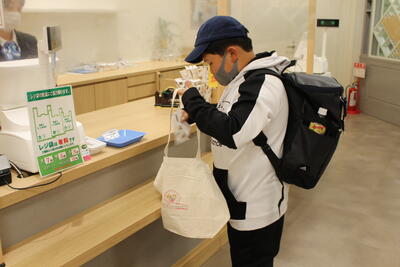
As mentioned in my previous blog post, East Asia is known as a region with high plastic consumption, yet high rankings on the management of their waste (Majidi, 2023). Recycling and waste management is one of several crucial aspects of responsible consumption, which is one of the United Nations Sustainable Development Goals (Department of Economic and Social Affairs). Out of the nations within East Asia, Japan is one of the highest-ranking countries in recent years for its educational programs on sustainable consumption (Majidi, 2023). Due to my position at Moka City Hall in the Tochigi Prefecture of Japan, I am doing research on a daily basis through local databases and newsletters. Upon further research of Tochigi Prefecture’s specific educational programs for primary school students, I came across a recent program called the Eco-Tabi Challenge. The Eco-Tabi Challenge was a sustainability initiative managed by the Resource Recycling Promotion Section of the Tochigi prefectural government where schools were challenged to have a zero waste school field trip (Tochigi Prefecture, 2021). A total of 78 schools applied and 48 completed the required documents for the program (Tochigi Prefecture, 2022).
For the Eco-Tabi Challenge, the regional government of Tochigi recruited elementary schools both inside and outside of the prefecture to host a school trip in Tochigi sometime between June 15, 2021, to March 31, 2022. During this trip, schools would need to implement initiatives such as ensuring that all students bring reusable water bottles, toothbrushes & toothpaste, and bags. Schools also had to make sure that all food was eaten and that there were no leftovers. It was up to schools to choose how to incorporate these initiatives and create unique initiatives of their own that aligned with the goal of the initiative to teach students how to practice environmentally friendly efforts. Five schools were recognized by the local government for their exceptional educational activities and initiatives that they included as part of their programs. I will provide a quick translated summary of these schools’ accomplishments as recognized by the prefectural government. As I am not a professional translator, I will note that there could be possible errors when translating this information into English. You can find the original Japanese sources cited at the end of this post.
Sakuyama Elementary School had a school trip with 15 students which followed the initial guideline of the Eco-Challenge (Tochigi Prefecture, 2023). In addition to the challenge’s requirements, Sakuyama Elementary School utilized digital technology to create presentations of their school trip and highlight their sustainability efforts during the trip by bringing their own slippers. 24 students from Ishizuka Elementary School researched souvenirs and restaurants prior to their school trip, in order to reduce overconsumption, and shared their findings through Google Docs for their classmates and families to review (Tochigi Prefecture, 2023). Although Kokufu Minami Elementary School only had 9 students participate, they came up with interesting inclusion like creating a newsletter to share with their school and utilizing a challenge card during their school trip to encourage students to engage in sustainable behaviors like using a reusable bag (Tochigi Prefecture, 2023). Arakawa Elementary School had 54 students record their sustainability initiatives on challenge sheets and receive a score based on the number of items each student completed (Tochigi Prefecture, 2023). 20 students from Ouchi Central Elementary School also utilized making PowerPoint presentations reflecting on their school trip and also had everyone use a reusable bag while buying souvenirs and walking around (とちテレNEWS).
Researcher Madeline Hoensheid cites a study that showed how an elementary school recycling education program had a significant impact on students’ behavior, habits, and attitudes toward recycling outside of school (Hoensheid, 2021). Researchers such as Eleni Altikolatsi emphasize the importance of recycling and sustainability education as early as possible to increase the likelihood of creating more environmentally aware citizens (Altikolatsi et al., 2021). These findings are still relatively new and there are few studies that have been conducted to analyze the behavioral impact of sustainability education for elementary school students. However, initial findings prove to be promising and researchers, as well as policymakers, should work to include more standardized sustainability learning in education, with a focus on responsible consumption and production.
Sources:
Altikolatsi, E., Karasmanaki, E., Parissi, A., & Tsantopoulos, G. (2021). Exploring the Factors Affecting the Recycling Behavior of Primary School Students. World, 2(3), Article 3. https://doi.org/10.3390/world2030021
Department of Economic and Social Affairs. (n.d.). Goal 12 | Ensure sustainable consumption and production patterns. United Nations. Retrieved March 5, 2023, from https://sdgs.un.org/goals/goal12
Hoensheid, M. (2021). Long-Term Effects When Educating Elementary Students on Waste Reduction in Minnesota. School of Education and Leadership Student Capstone Projects. https://digitalcommons.hamline.edu/hse_cp/703
Majidi, H. (2023). Will Recycling Today’s Consumerism Lead to Tomorrow’s Solutions? Education & Development. https://sites.miis.edu/educationanddevelopment/2023/03/13/will-recycling-todays-consumerism-lead-to-tomorrows-solutions/
とちテレNEWS (Director). (2021, November 20). エコたび栃木 環境にやさしい修学旅行 エコバッグで買い物. https://www.youtube.com/watch?v=rL6uyhp_6II
Tochigi Prefecture. (2021). エコたび栃木プロジェクトの開始について. 栃木県. https://www.pref.tochigi.lg.jp/d05/2021ecotabitochigi.html
Tochigi Prefecture. (2022). エコたび栃木プロジェクト参加校募集!. 栃木県. https://www.pref.tochigi.lg.jp/d05/ecotabi.html
Tochigi Prefecture. (2023). 令和4年度エコたび栃木プロジェクト「エコたびチャレンジ」優秀校の決定について. 栃木県. https://www.pref.tochigi.lg.jp/d05/houdou/ecotabi-yusyu2023.html真岡市立大内中央小学校. (2021). エコ旅とちぎ. http://www.moka-tcg.ed.jp/ouchjsc/blogs/blog_entries/view/34/6781b3febd5f3297b9a6aec7faf1144f?frame_id=74
Tostan: how a literacy program became the foremost actor upending FGM/C
In my last post I advocated for nonformal learning programs as a uniquely qualified tool to combat harmful cultural norms like female genital mutilation/cutting (FGM/C), and more broadly, gender equity. Today I bring you just such a program: Tostan, founded in Senegal and now also operating in The Gambia, Guinea, Guinea Bissau, and Mali.
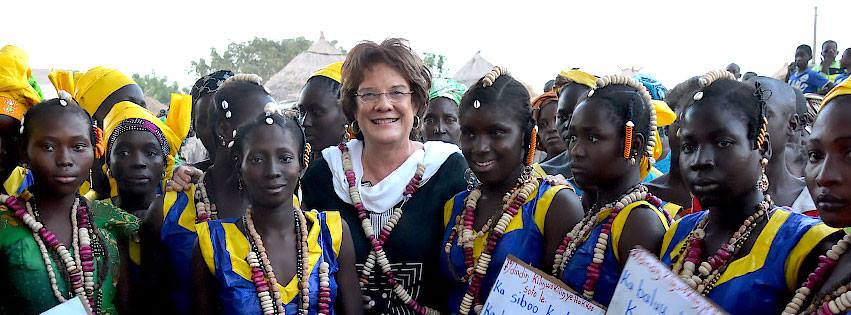
Established as an NGO in 1991, Tostan was not created to end FGM/C. Rather, founder, Molly Melching, under the mentorship of famed Senegalese scholar Dr. Cheik Anta Diop, envisioned it as a nonformal literacy program, operating in local languages. At a time when formal education in Senegal was offered only in French, this set Tostan apart. Melching recognized and embraced the importance of meeting people where they were, both linguistically and culturally. By 1995, a curriculum transformation was underway. The Tostan team, in working closely with participants, had discovered that learner-introduced questions on democracy and human rights were creating what Paolo Freire called, “generative themes”. A generative theme being one that unlocks for critical examination that which has previously been assumed to be “natural”, or “unchangeable”, to begin the work of separating that which is nature from that which is human construct.
Because the Tostan facilitators were receiving similar questions across multiple locations, they adapted their modules to include interactive explorations of democracy, human rights, and health early in the first year of learning. This adaptive, learner-led approach to creating curriculum is a central characteristic of nonformal learning programs, and why Tostan has proven so powerful.
In my interview with Diane Gillespie, Ph.D. in Cultural and Psychological Studies in Education and long-time qualitative analyst for Tostan, she described the critical component of nonformal learning programs like Tostan as their ability to awaken the capacity to aspire. She explained that Dr. Arjun Appadurai reasoned that development had failed in many ways because the resource poor were not given the opportunity to meaningfully aspire to the future, they lacked the navigational skills, not the intelligence. Which is why Tostan’s first step for learners is a visioning exercise. Learners draw and verbally describe their vision for their community, how they would like it to be.
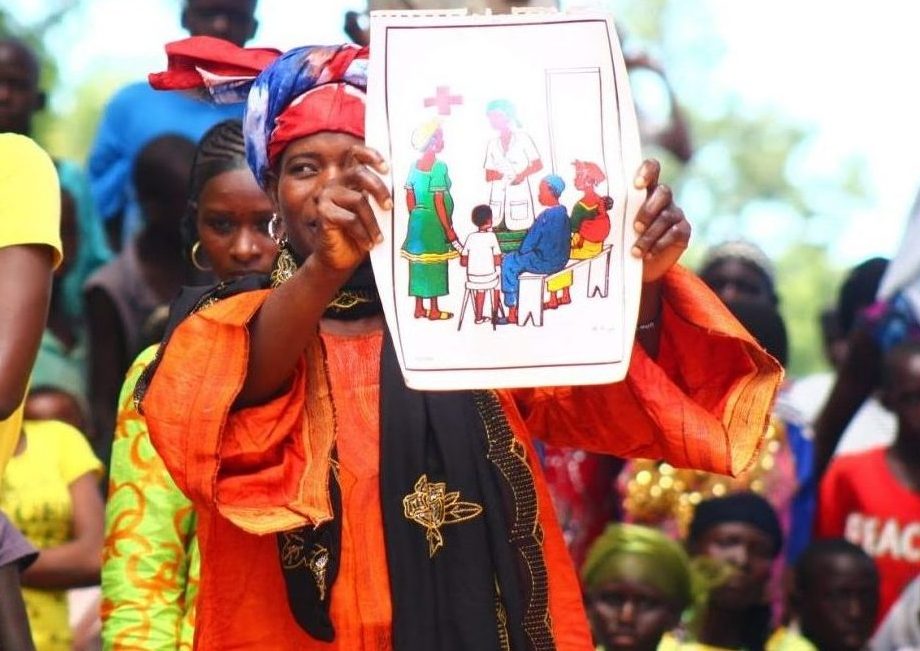
This is followed by an exploration of their place in relation to others, as an individual, a community, within the nation, and finally the world. And within this conversation a very important moment arises: learners begin to identify the roles they each play. Gillespie describes how “the women come up and say ‘I sweep the room, or cook millet….and the man is a religious teacher’” and this is where “the light comes in, where ‘those were learned roles’” comes into focus” for the first time. And in this moment, the recognition of what is man-made versus what is natural starts to take hold, the process of loosening the grip of cultural norms begins.
Learners then revisit the visioning exercise, in which they pictured a vibrant healthy community. They are now able to recognize that in order to reach that goal, people will need to take on different roles, and because the roles are human constructs, the roles can indeed be changed. This is where transformation of consciousness emerges.
The next step is understanding how to analyze a problem and address it effectively. Because FGM/C is tied to marriage customs, it is not enough that one family or one village decides to stop cutting their girls. The intermarrying groups must accept brides who are not cut. And so the work of advocating and organizing for change becomes the next phase for the learners, action.
This is one of many areas where other organizations stumble. What enabled Tostan to move forward was the value system Melching had adopted at the outset, a philosophical standard for nonformal approaches. Tostan demonstrated respect for the people by teaching in their language and with sensitivity to and inclusiveness of their culture and customs. They did not arrive trying to teach people French, telling them what they needed. For this reason, many elders respected their approach, and trusted the intentions of the organization. One such elder was Imam Diawara, whose advocacy in 1998 on behalf of ending FGM/C resulted in his village and their intermarrying villages to publicly pledge their abandonment of FGM/C, 13 villages in all. The journey of creating their newly envisioned future was underway.
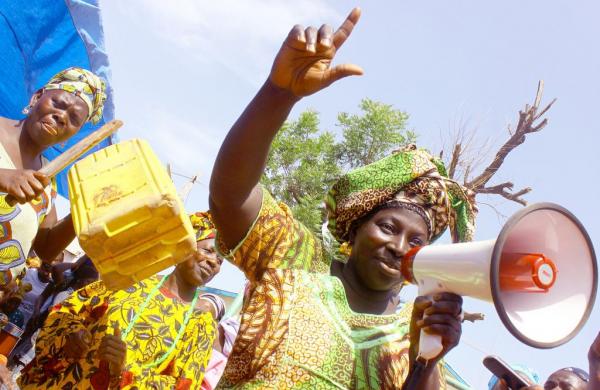
By 2008, a USAID evaluation of Tostan’s work found that “a striking change” could be seen in the villages. Tostan undoubtedly empowered communities to action. The villages had not only remained united in their abandonment of FGM/C, but even more powerfully, they now viewed this previously deeply imbedded practice as obsolete. A second evaluation performed by UNICEF in the same year found that, in villages which had been working with Tostan, a mere 30% of girls had been cut. In stark contrast, 69% of girls in similar villages which had not participated in the Tostan program had been cut. Further, as of 2021, 5,700,000 people from 9,517 communities had publicly declared an end to FGM/C. This does not mean that every individual has abandoned the practice, as the UNICEF report demonstrates, but it can be said that every participant has now been able to critically examine their beliefs and make informed decisions for their well being and that of their children.
It is important to remember that the original Tostan literacy program did not generate, nor seek to generate, these large, mobilized efforts. Rather, action arose out of communities who asked their facilitators to help them investigate democracy, human rights, and health. Through the synergy created by this examination and exploration, they self-mobilized. It was the adaptive nature of nonformal learning programs that enabled this shift in curriculum. And through the trust earned by grounding the program in local language and culture, another cornerstone of nonformal learning, Tostan created a space that felt safe for learners to interrogate their beliefs. It is through this nonformal framework that communities are emerging, one step closer to gender equity on a long and arduous path.
